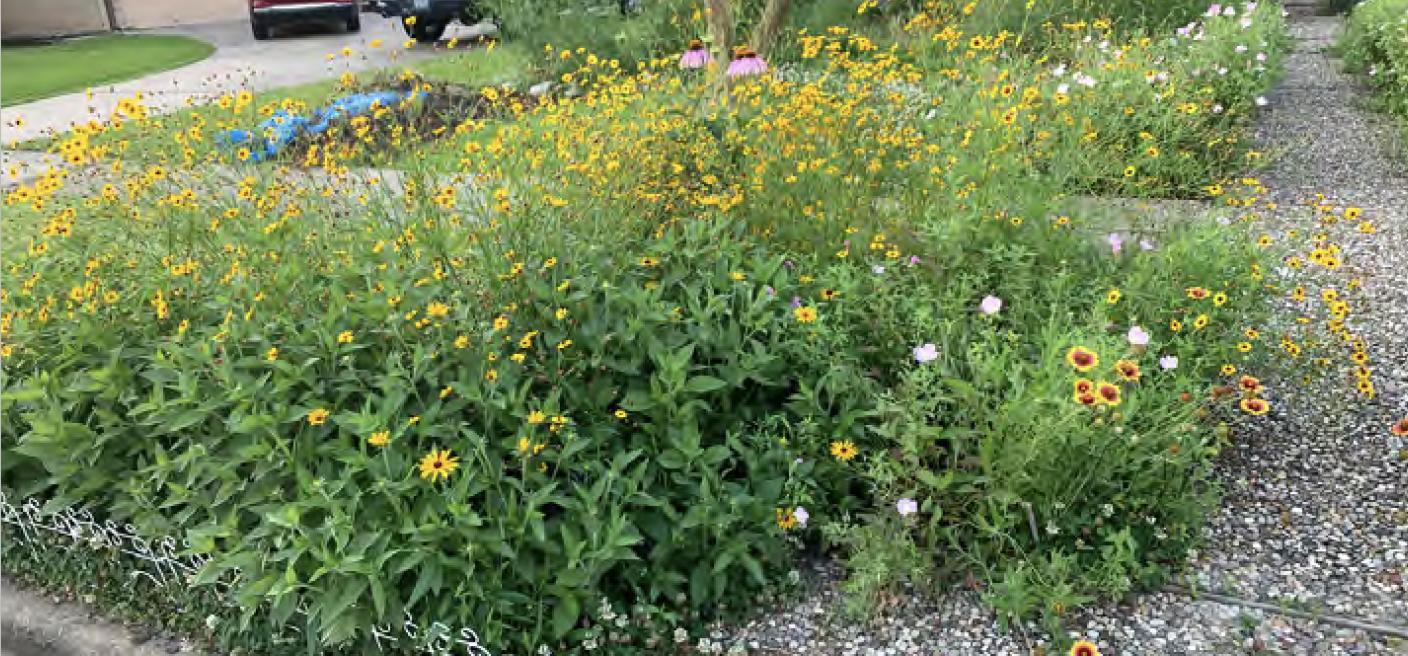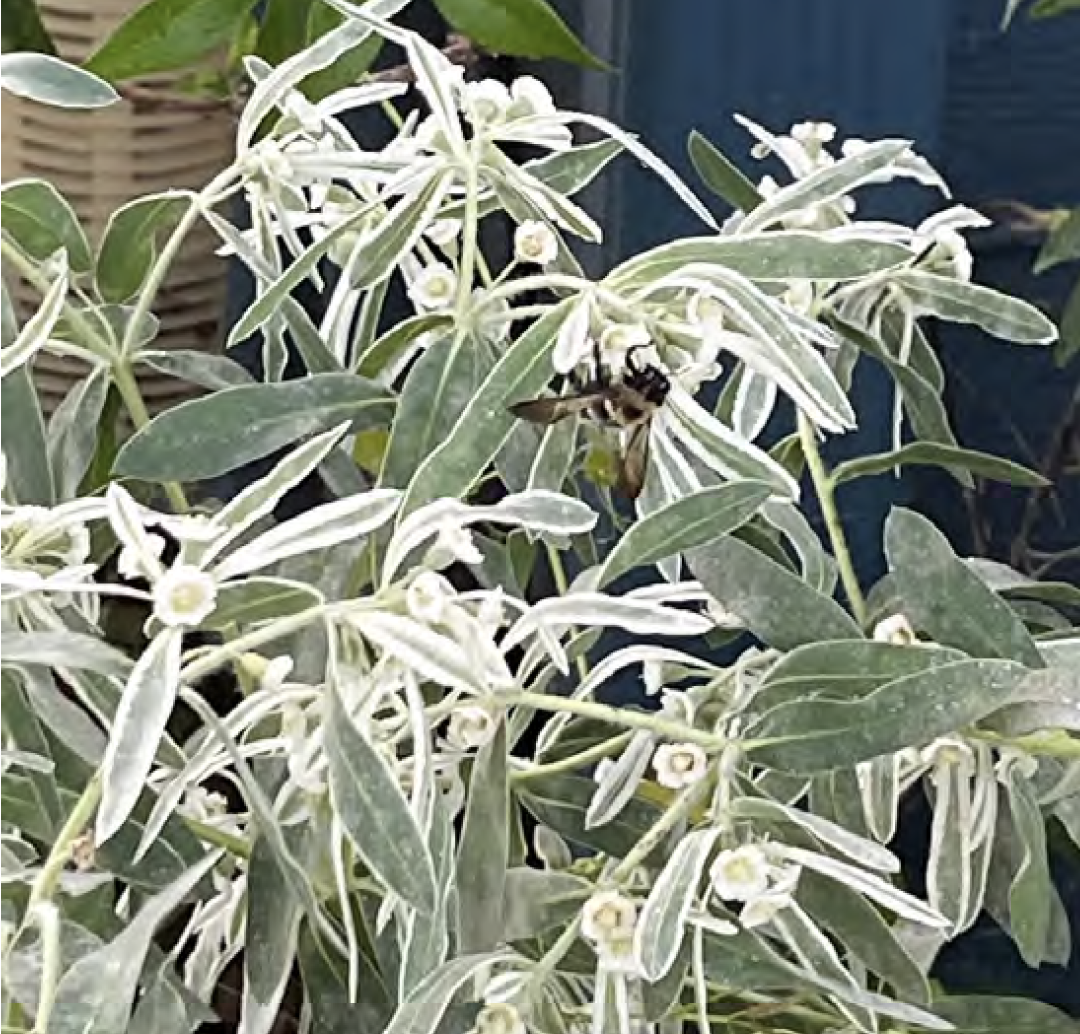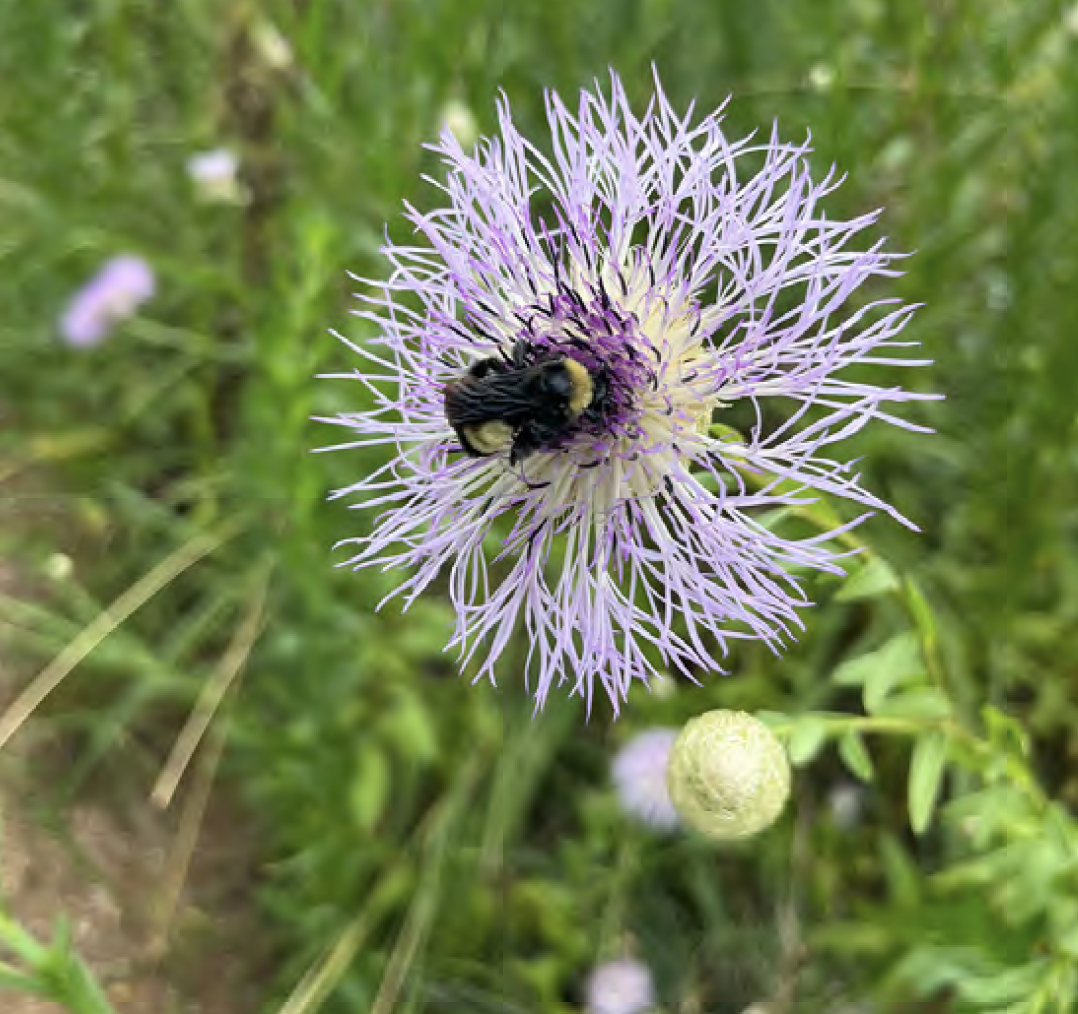
Harris County Master Gardener Shares Benefits of Growing Native Plants
Article and photos by Robin Yates, Harris County Master Gardener
Definition - Native Plant (Native Plant Society of Texas)
A plant that evolved and occurs naturally, with no human intervention in a region or environment; present prior to Euro-American settlement.
When landscaping our homes, we have a seemingly endless supply of options. When it comes time to buy the plants to be placed, why should I include native plants in my decisions? That is a good question! I hope to pique your curiosity about the many benefits of planting native plants in your yard. I suggest that we look with a different set of glasses when we are choosing the plants we will place in our yards and gardens.
First, what do we mean by the term native plant? According to the Native Plant Society of Texas, a native plant is one that evolved and occurs naturally, with no human intervention, in a particular region or environment (Native Plant Landscaping Course, Level 1). A Texas native plant is one which is indigenous to Texas prior to Euro-American settlement.
When we visit a nursery, what do we usually ask about the plants we buy? How much does it cost, what color is it, what size will it be when mature, is it drought, flood, frost, and heat tolerant? But what if we looked at our yard in a different way?
Wildlife Habitat
A few years ago, I developed a habit of following the pollinators when I visit my local nursery. I look for the butterflies, bees, dragon flies and moths. The plants that fed them were likely to end up on my cart and planted in my yard. As it turns out, the wildlife evolved with the indigenous flora and are dependent upon it for survival. We are in the midst of what scientists are calling the sixth mass extinction. Twenty-one species were removed from the Endangered Species List in September of 2021, not because they had recovered, but because they were extinct.
You may have heard or read of the decline of the monarch butterfly or the decreasing songbird population in North America. As native plants evolved simultaneously with insects and other wildlife, they provide the habitats those species recognize and require for survival. Our ecosystem depends upon insects, pollinators and others to survive. By placing a native plant in your garden, you are helping the entire ecosystem.
Less Maintenance & Expense
Because native plants are the survivors over millennia in this climate and soil, they are naturally hardy. They do not need the herbicides, insecticides, fungicides, and fertilizers that many introduced plants need. Thus, we incur less maintenance expense, time, and there is less runoff pollution in our waterways.
Weather Tolerant
These plants are survivors! You can think of them as the champions, who over millennia, developed and out-competed others to be here today. Natives have a survival advantage. They are more likely to survive freezes, drought, heat, and flooding.
Flooding Solution
Here in the Houston area, we don’t have just “rain”. We have rain events. We experience a lot of water in a short time span. The potential for flash flooding is commonly heard during our weather forecasts. On a regular basis, we see green areas being bulldozed over and pavement put in its place. Parks turned into parking lots. Where can the water from our rain events go? According to Texas Parks and Wildlife, our ecosystem is Gulf Prairies and Marshes. Many of the native prairie plants have deep root systems (dyckarboretum.org/roots-of-native-plants). These roots create channels to draw rainwater from the surface, deep into the ground, replenishing the aquifer. This is an oft-neglected flood mitigation strategy. Historically, our common method of handling rainwater involves channelizing our bayous. We make them deeper, wider, and straighter to remove it as quickly as possible. Whereas nature deals with heavy rain by spreading it out, slowing it down, and soaking it in.
Water Purification
The deep root system of native plants also enables them to filter the water of pollutants, cleaning the water before it re-enters the water cycle.

Water Conservation
Because native plants evolved here, in this ecosystem, they will survive on local rainfall once established. This decreases supplemental watering needs -- an important consideration, as fresh water is a limited resource.
Carbon Sequestration
When annuals die and perennials go dormant, the receding roots decay and become Soil Organic Compounds (SOC). This is how carbon is taken from the atmosphere through photosynthesis and placed in the soil, positively affecting climate change.
Improved Air Quality
Native plants also improve air quality through photosynthesis and less maintenance. Gasoline powered lawn equipment-mowers, weed eaters, and leaf blowers, are a major source of ‘nonroad gasoline emissions’ (epa.gov/sites/default/files/2015-09/documents/banks.pdf). The less we use gasoline powered lawn devices, the better for air quality. The noise of these machines is also a source of audible pollution.
Sense of Place
Our culture has tried to separate our daily lives from the nature around us. Yet many of us have found spending time in nature an effective strategy for dealing with the difficulties of the pandemic. Interacting with nature has proven to reduce anxiety and depression. Many of my neighbors tell me they smile when they walk past our yard, as there are flowers blooming in every season. Native plants literally bring nature to your doorstep. All I need to do to relax out in nature is to step outside!
We have reviewed a number of benefits of native plants, so what can we do? The good news is any native plant you put in your yard or garden helps.

Start with just one plant. You don’t need to make any big changes. Start small and observe.
For further reading on this subject, I recommend Doug Tallamy’s books Bringing Nature Home and Nature’s Best Hope. He is an entomologist at the University of Delaware whose research focuses on the benefits of native plants. He is leading a movement he has named Homegrown National Park, where everyone who plants a native plant in their yard can add their yard to the map, in an effort to increase the use of native plants in our landscaping.
I am taking the Native Plant Society of Texas’ Native Plant Landscaping Certification classes (npsot.org/wp/nlcp) and using what I learn to develop a new bed at the Genoa Friendship Gardens. Come meet the plants and learn how to bring native plants to your yard and garden!
Source: Harris County Master Gardeners Urban Dirt Newsletter (March 2023 Edition)
About Urban Dirt
Each month, Harris County Master Gardeners publishes an informative, resourceful newsletter entitled "Urban Dirt". This article was derived from the March 2023 edition. To read the March 2023 edition of this newsletter, click the button below.
URBAN DIRT - March 2023 EDITION

